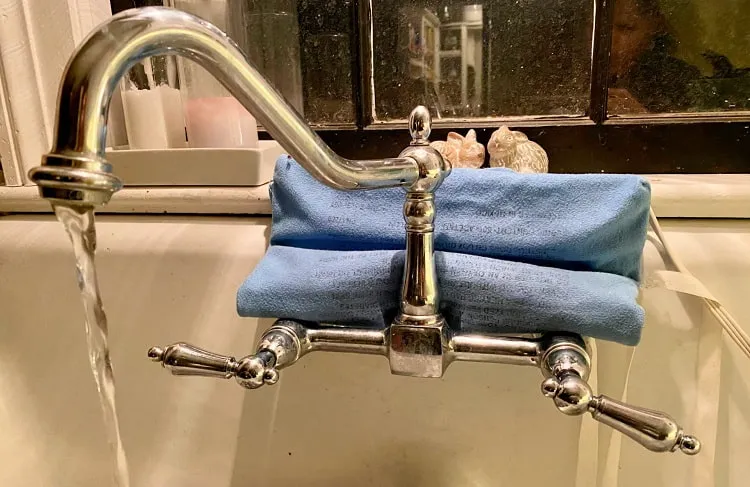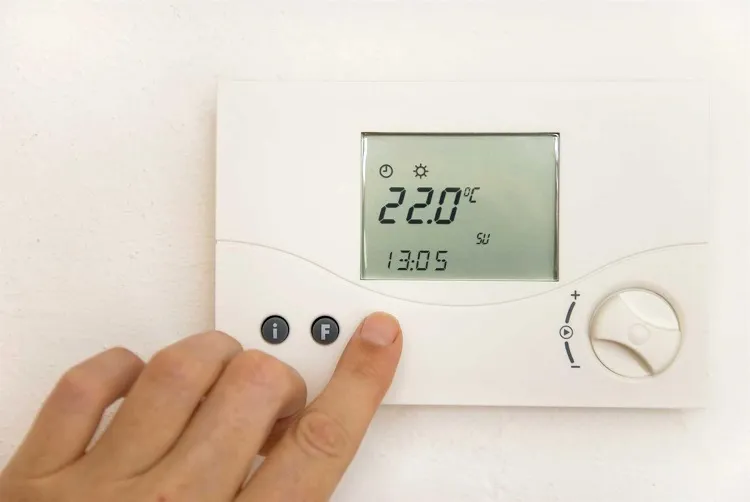Do you think that your bathroom pipes might be frozen? Frozen pipes in the winter months can be a huge problem for a lot of homeowners. It’s a common concern that can cause significant damage to your home if not taken care of properly. What’s important is to act fast and take the necessary steps to thaw frozen pipes before any major damage is done. Do you want to find out how to thaw frozen pipes by yourself? Here are 5 simple steps to fix them for good!
How to confirm that the pipes are frozen?
If you think you have frozen bathroom pipes, one way you confirm this is by checking if any water comes out of your tap when you turn it on. If not, go check if your water is still turned on and whether you might have a leak. Once you’ve done these things, also investigate if any water pipe has burst. If neither of these issues have occurred, then your pipes might really be frozen. Try to locate the area of the freeze. This can usually be done by feeling along the length of the pipe for any cold spots. When you locate the frozen area, you’ll need to turn off the main water supply to the house. This will prevent additional water from entering the pipes, which could cause them to burst.
How to thaw frozen bathroom pipes?
When you have to thaw your frozen bathroom pipes, it’s always best to call a professional to do this, as performing the task incorrectly can cause serious damage. However, if you think you can safely do this by yourself, or are experienced in the matter, there are a number of ways in which you can thaw frozen bathroom pipes. To start, once you have shut off the main water supply, make sure that you keep the tap running. This will prevent a pipe from bursting, as when it freezes, a lot of pressure builds up.
The hair dryer method
The first method for thawing frozen bathroom pipes is to use a hair dryer. This is one of the easiest and safest methods for thawing frozen pipes. Plug in the hair dryer and turn it to its highest setting. Slowly move the hair dryer around the frozen section of the pipe. Make sure to keep the hair dryer at least a few inches away from the pipe. Be careful not to hold the dryer in one spot too long, as this can cause the pipe to become too hot and burst. Keep moving the dryer around the frozen section until the ice has melted, and the water begins to flow.
Heating pad/cable method
Another method you can try for frozen bathroom pipes is to use an electric heating pad or cable. To use an electric heating pad or cable, first place it around the frozen section of the pipe and plug it in. The heat from the pad or cable will slowly thaw out the frozen pipe. Make sure to keep an eye on the pad or cable at all times, as it can become too hot and burst the pipe if left unattended. Keep on heating until the water pressure is restored.
Will pouring hot water down drain unfreeze pipes?
Don’t try to thaw your pipes by pouring hot water down the drain! This is a mistake that a lot of homeowners make. When hot water is poured on a frozen pipe, the extreme temperature difference between the hot water and the cold pipe can cause the pipe to crack or burst. It is also possible for the pipe to expand too quickly and cause a leak. If the pipe is older or made of a weaker material, the risk of bursting increases. Additionally, the extreme heat of the water can cause the pipe to melt, which can cause serious water damage.
Final check for leaks and signs of damage
Once the pipe has started to thaw, you can turn on the main water supply to the house. As the water starts to flow, it will help to finish thawing the pipe. However, if the water is not flowing freely, you may need to apply more heat to the pipe. After you have finished the whole process, check for any leaks and signs of damage. Turn on all the taps in your home to make sure that there aren’t any other frozen pipes. If there is any issue, you’ll need to call a plumber to fix the problem.
How to prevent frozen pipes in the future?
In order to prevent frozen pipes from happening in the future, it’s important to take some preventative measures. Make sure to keep the temperature in your home above 55 °F /13 °C and insulate any exposed pipes. You should also keep all of your windows and doors closed, and seal any cracks or gaps in your walls or floors. Finally, it’s critical to check your pipes regularly for any signs of wear or damage. This will help to identify any potential risks before they become an issue.
Thawing frozen pipes can be a difficult and time-consuming process, but it doesn’t have to be. By following the steps outlined in this article, you can easily thaw your frozen pipes and prevent them from becoming a problem in the future. In the meantime, if you are also having some troubles with your air conditioner, here are some DIY ideas on how to repair it. Good luck!




